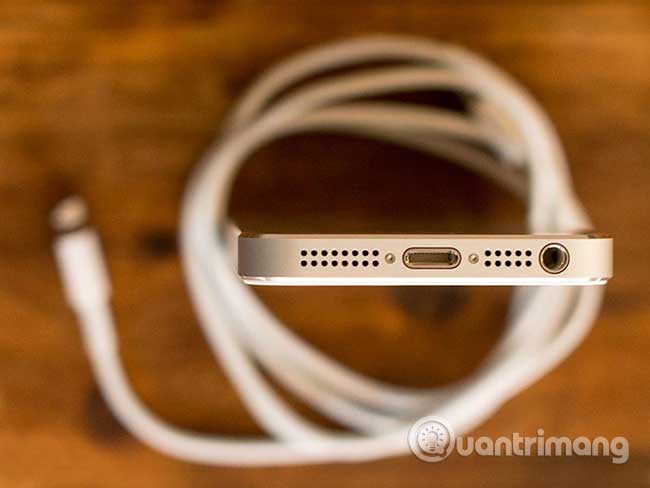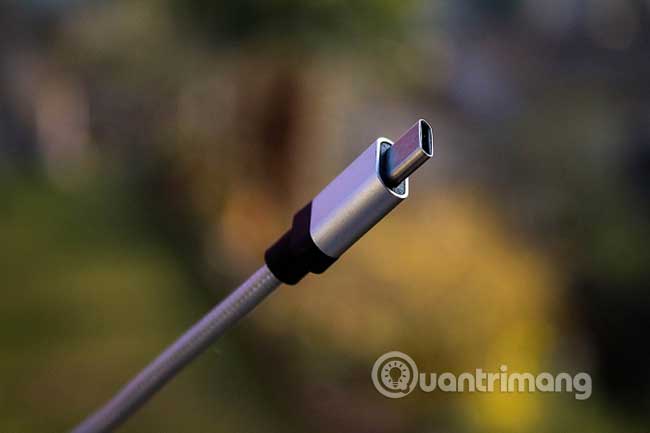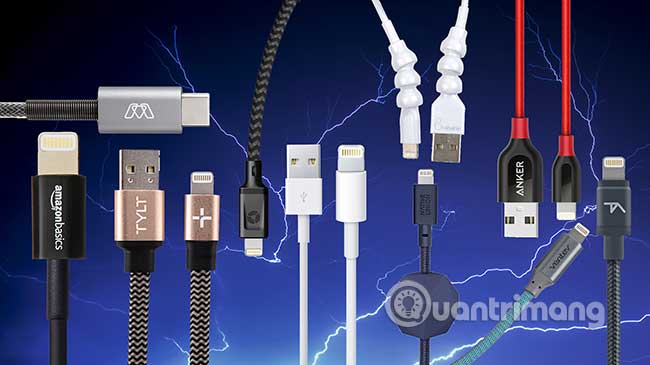5 reasons why Apple should ditch the Lightning cable
Apple's Lightning connector has been around since 2012, becoming a staple in the Apple ecosystem. But despite being a recognized Apple flagship product, it might be time for the company to retire the Lightning cable.
Here are 5 reasons why Apple needs to remove the Lightning connector.
Why should Apple "kill" Lightning cable?
- 1. Costs to customers
- 2. Convenient for users
- 3. Electronic waste
- 4. USB Type-C has appeared
- 5. Fragmentation in Apple's device connector
1. Costs to customers
Excessive financial cost to consumers is one of the main reasons Apple should remove the Lightning connector on its devices.

Have you ever wondered why cables with Lightning connectors are more expensive than Micro USB or USB Type-C cables? Since the Lightning connector is Apple's proprietary technology, there is an additional charge.
As a result, any third party company that makes devices with these connectors and ports must pay for a license from Apple. This adds to the overall cost.
This cost extends to adapters in many ways. Because only Apple devices use Lightning connectors, iPhone owners often have to invest in adapters for third-party peripheral accessories (and sometimes even for other Apple devices). These costs accrue over time. Again, unlike non-exclusive accessories, each adapter will also have an additional licensing fee for the cost of the elements that make up the standard price.
The cost and demand for the adapter is only increasing for customers who are interested in the decision to remove the headphone jack on Apple's iPhone.
2. Convenient for users
Even if the cost of Lightning-compatible devices is not an important factor for you, the use of a proprietary connector is of no benefit to convenience.
This is especially true for those who are not completely immersed in the Apple ecosystem. Most Android users can exchange cables between devices. For example, if they are on a trip, usually only one or two cables are enough for all devices, from phones, smartwatch chargers, mobile modems, to Bluetooth headsets, etc. .
When Android users lose the cable, they can often reuse the cable from another device. Moreover, with USB Type-C devices, many users can charge their phones and laptops with a single cable.
However, users cannot reuse and exchange cables between a variety of devices with Lightning connectors. After all, Apple has a relatively closed ecosystem. IPhone owners must remember different types of cables for Apple and non-Apple devices. After that, they also have to consider the different types of adapters that will be needed.
3. Electronic waste
Competition and diversity for consumers is often a good thing. But too much variety when it comes to connector types contributes significantly to the amount of electronic waste. Every time consumers change their main equipment, or companies discard certain types of connectors, these cables and adapters are often thrown into landfills.
Technically, making the Lightning connector redundant will also result in many of these cables being thrown out. But if the market switches to a universal connector for data and energy transfer, this will reduce the amount of electronic waste in the future.
If users can use the same type of connector on smartphone brands, computers and other devices, they will most likely reuse the same cable. Moreover, it will reduce the excessive demand for dongles and adapters.
Therefore, many support the application of a universal connector for mobile devices and laptops. But because the Lightning connector is proprietary, it is not a suitable candidate. In addition, there is the fact that other cable connectors are more widely accepted by consumers, making them a better candidate than Lightning.
4. USB Type-C has appeared

Lightning connectors also offer certain benefits. Connector compact and compatible with external monitors. You can also plug it in both sides (unlike Micro USB).
However, with the launch of USB Type-C, the Lightning connector is no longer the only exception. USB Type-C can also be plugged in on both sides and is compatible with a wide range of peripherals. In addition, it also possesses benefits that the Lightning connector does not have.
USB Type-C connectors and ports are compatible with Thunderbolt 3, support USB 3.1 and are even being used for some HDMI cables. Moreover, the USB Type-C connector supports super fast charging for devices and SuperSpeed data transfer speeds.
USB Type-C is also not perfect. There are still issues and aspects that need improvement. However, it is a step up from the outdated Lightning connector. It also benefits as a universal connector on many brands.
5. Fragmentation in Apple's device connector
The Lightning connector is becoming obsolete over time, to the point where Apple doesn't even include it on every iPhone or iPad model. This eliminates the justification that Lightning connectors allow users to seamlessly connect their devices within the Apple ecosystem.
But the problem is that Apple is not phasing out this technology. Instead, Apple's use of Lightning connectors has changed rapidly over the past few years. For example, the iPad Pro 2018 uses a USB Type-C port. However, the 2019 version of iPad Air already uses the Lightning port and so does the iPad Mini 2019.
Moreover, setting up a new MacBook port means iPhone users need to invest in an additional cable. The 2018 MacBook, MacBook Pro, and MacBook Air all use USB Type-C ports and do not have USB Type-A ports. Therefore, iPhone owners need to buy a special Lightning to USB Type-C cable to connect their smartphones to Apple's new laptops.

With all of the above, Apple has refuted its own arguments about user convenience. Replacing the proprietary connector with USB Type-C will increase convenience for new Apple device owners.
It's been years since the release of the Lightning connector and unfortunately, the technology has become obsolete due to a lack of updates. With the inclusion of USB Type-C, e-waste and consumer convenience considerations, there is little reason Apple continues to stick with its proprietary connector.
If you still have questions about connectors in Apple device technology, check out TipsMake.com 's guide on adapters and ports for Apple Macs and iPhones.
You should read it
- This unremarkable looking Lightning cable can steal your data and send it to hackers
- With this fake Lightning cable, hackers can remotely take over your computer in minutes
- We can still survive after being struck by lightning, why?
- Shocked the series of lightning strikes causing mass death
- Apple reduced the price of USB-C cables to Lightning to $ 19
- What is lightning? Why is there lightning?
- Please download more than 50 lightning wallpapers, lightning wallpaper for computers
- How to use Photoshop CS5 - Part 26: Create a lightning effect
- What is USB Type-C, Lightning, which has a superior advantage?
- The longest lightning in the world reaches more than 320 km
- iPhone XI 2019 and the long story surrounding the fate of Lightning gate
- Simple method of calculating the safe distance between lightning and people






 This unremarkable looking Lightning cable can steal your data and send it to hackers
This unremarkable looking Lightning cable can steal your data and send it to hackers With this fake Lightning cable, hackers can remotely take over your computer in minutes
With this fake Lightning cable, hackers can remotely take over your computer in minutes Apple reduced the price of USB-C cables to Lightning to $ 19
Apple reduced the price of USB-C cables to Lightning to $ 19 We can still survive after being struck by lightning, why?
We can still survive after being struck by lightning, why? Shocked the series of lightning strikes causing mass death
Shocked the series of lightning strikes causing mass death iPhone XI 2019 and the long story surrounding the fate of Lightning gate
iPhone XI 2019 and the long story surrounding the fate of Lightning gate